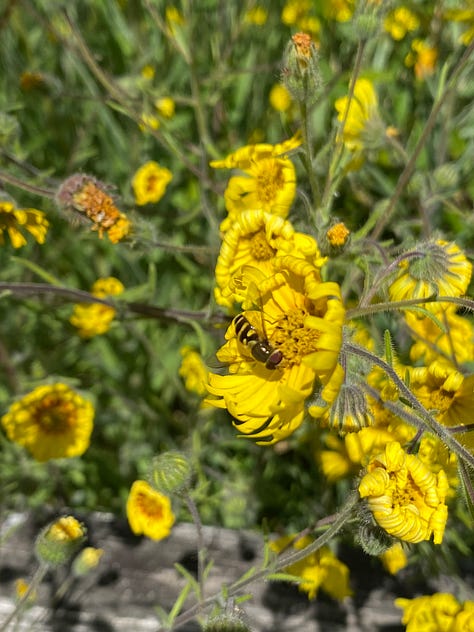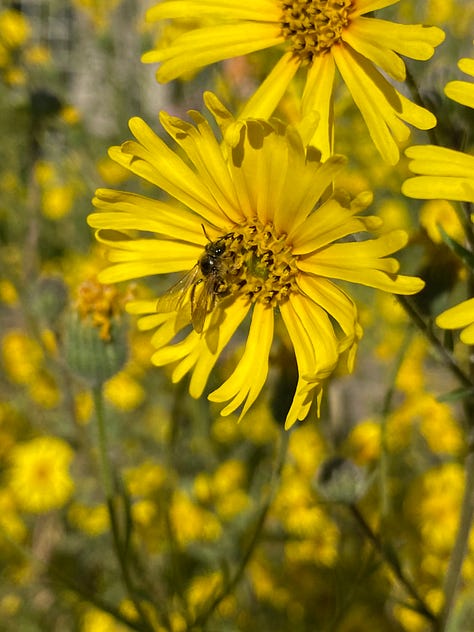The garden I’m growing now is trying to build a Western garden aesthetic that works for me and right now I’m enjoying what it’s offering.
The things I do in my Western garden, that help it go lightly on the landscape are easy to do. They make the garden pollinator and wildlife friendly, they use very little irrigation, and they are cheaper. And all these things qualify as activities in the Little Habitat Project. Marion Soil & Water Conservation District’s (MSWCD) Little Habitat project certifies gardens that ‘build ecosystem resilience in places where wildlife and people intersect’. I love that putting healthy gardens into urban spaces for everyone to see is their goal. To certify, gardeners take at least two eco-friendly actions from each of five categories: soil, water, plants, infrastructure, and education. Taking more actions moves gardens through three levels of certification, represented by an acorn, a sprout, or an oak tree.
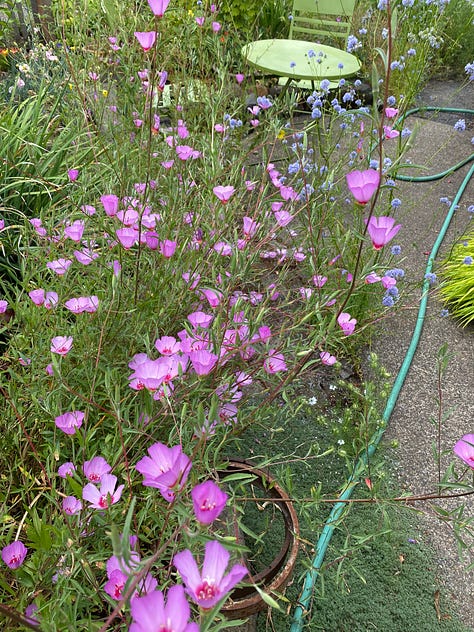


Three gardens in Silverton are certified Little Habitat gardens, mine, and the gardens of Ron Garst, and Jim Esch. Each of these gardens is very different from the other, which helps prove the potency of this program built by MSWCD. Esch’s garden is drought tolerant with tough shrubs and young native trees. Drought tolerance is one of the water activities in the certification program. It’s very low maintenance and visited by deer. Streetside, flowers offered by the evergreen shrubs and trees aren’t flashy. It’s a small garden with native milkweed flowers behind the privacy fence. There is even a rotting log for insect habitat which meets an infrastructure activity in the program. It’s a low maintenance garden and the leaves stay on the ground amongst the shrubs over the winter. This adds to the soil and meets one of the soil actions for certification. The Garst garden is larger and presents as traditional. The lawn is broad and green, but it is one of the drought tolerant grass types, cut a little higher. It’s studded with lots of native shrubs that provide benefits to wildlife. There is a patch of reseeding native annuals providing months of blooms to pollinators and rocks piled as habitat. All these meet different activity requirements. Both men meet education activities of the program by teaching about wildlife and wildlife gardening.


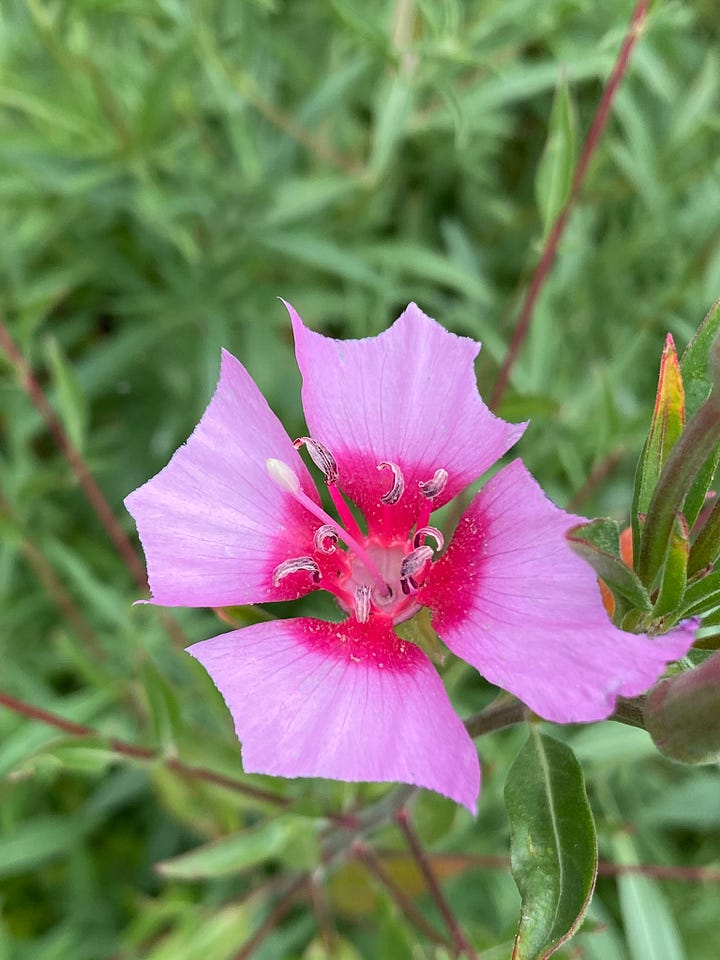
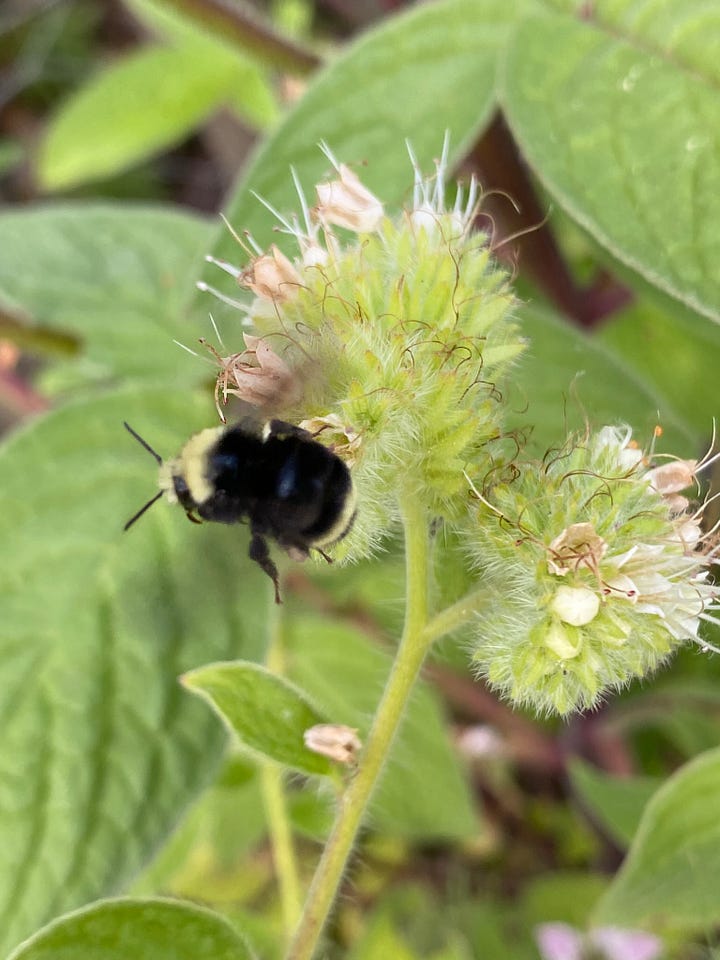
These gardens embrace the ecosystem of the Willamette Valley and build habitat connectivity. The gardens are filled with native plants that are familiar to indigenous wildlife, much of which is completely reliant on these plants. Most urban gardens rely on exotic plants creating space that isn’t very useful for native wildlife. That kind of biodiversity is turned on its head as this program encourages the use of native plants from different categories. It asks gardeners to grow tall trees, understory trees, shrubs, and flowers/groundcovers. This creates vegetation layers and is important for wildlife habitat. Participants fit their native plantings into seven plant categories such as woody, evergreen, annual, vining, or perennial. Then the productivity of the plants is considered. We understand pollen and nectar as important, but the fruit and seeds or nuts flowers produce are also important for wildlife. I’ve never considered the sap my trees produce as a wildlife benefit, but the project calls it out as an important product some plants provide wildlife.
Shrubs add much structure to my garden, many are exotic. When their leaves drop, I don’t rake them, and I leave most of the dead perennial stems. This builds the soil and provides overwintering habitat for insects, and it meets the practices for the soil and plants categories. The program suggests at least 70% native plants for the greatest wildlife benefits. I have more than 30 species native to the Willamette Valley growing. Native flowers dominate my garden from spring into September. It’s a flashy, though small place, because I plant them in large swaths, fulfilling an activity for certification. The most colorful are annuals. Some showy perennials like Oregon sunshine and the red and yellow Western columbine fill other niches. Phacelia nemerosa lacks visual appeal, if I’m being honest, but bumblebees go nuts for it. Meadowfoam and rosy plectritis anchored April and early May, followed by weeks of Collinsia grandiflora. Mid-May saw the first golden daisies of Madia elegans which are still going strong in July. Farewell-to-spring could be named welcome-to-summer – another reason I don’t like common names. It explodes into a riot of pink flowers in celebration of the longest day of the year continuing into August. These annuals I’ve mentioned host more pollinator activity than I’ve ever experienced in my garden. They throb with a great diversity of winged life. On the madia or clarkia, I see more diversity in pollinators than I’ll see visiting the rest of my garden flowers combined. Hosting pollinators like this meets one of the project’s big goals.
Find out about the Little Habitat Project here. And if you decide you want to participate, be sure to tell them you learned about it from me.


